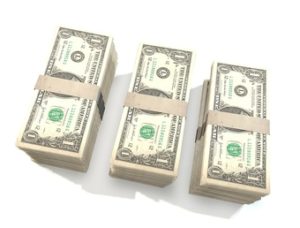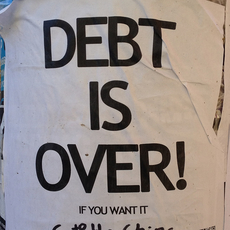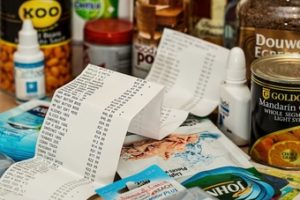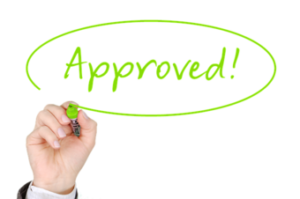During the span of my debt life, I have searched for, tried and tested many strategies in pursuit of a method to conquer my debt challenges.
Paying off debt may seem like an impossible task especially when interest charges piggyback your debt. So, in order to stop this debt madness, you need a debt killing strategy.
Here are my 6 tried and tested debt killing strategies: debt snowball, debt avalanche, keep spending in check, credit card lock, debt consolidation, and pay more than the minimum payment.
Should you find yourself in a debt crisis use one of these proven strategies to kill your debt.
Debt Snowball
Recommended by money expert Dave Ramsey, the debt snowball strategy focuses on paying off the smallest debt first while maintaining minimum monthly payments on other debts. As each debt is paid off, the money that was used for the previous debt is used to pay the next smallest debt.
This process is repeated until all debts are gone. Even though this strategy might not save you as much money on interest charges, it is motivating to pay off one account at a time. This method includes a series of small successes at the beginning. As a result, you get a psychological boost to pay off your debt.
Here’s how to use it:
- Stage 1: Make the minimum payment on all of your accounts.
- Stage 2: Put as much extra money as possible toward the account with the smallest balance.
- Stage 3: Once that debt is paid off, take the money you were putting toward it — and funnel it toward your next smallest debt. Continue like that until all your debts are paid.
Example of the Debt Snowball in Action
| Type of Debt | Balance | Interest Rate | Monthly Payments |
|---|---|---|---|
| Personal loan | $5,000 | 10% | $161 @ 36 months |
| Credit card | $8,000 | 18% | $235 @ 48 months |
| Auto loan | $15,000 | 4.5% | $535 @ 30 months |
| Student loan | $30,000 | 5.5% | $350 @ 104 months |
- Always pay the monthly minimum required payment for each account.
- Put any extra money towards the lowest balance: the personal loan.
- Once the personal loan is paid off, use the money you were putting towards it to pay off the next smallest balance: the credit card debt.
- After the credit card is paid off, take what you’ve been paying and add it to your payments for the auto loan.
- Once the auto loan is paid off, take what you’ve been paying and add it to your payments for the student loan.
Pros and Cons of the Debt Snowball
When you’re facing an overwhelming amount of debt, this method lets you see progress as quickly as possible. By eliminating the smallest, easiest balance first, you can get that account paid off.
The snowball big downside is you’ll probably end up paying more in the long run as compared to some strategies discussed later in the article. Since you don’t take interest rates into account, you could end up paying off higher-interest accounts later.
Debt Avalanche
Instead of focusing on the debt with the smallest balance, the debt avalanche focuses on paying off the debt with the highest interest rate first. While continuing to pay minimum monthly payments on all other debts. After that, focus on the debt with the second-highest interest rate and repeat the process until all debts are gone.
With this strategy, I paid off my accounts in order from the highest interest rate to the least.
Here’s how I used it:
- Stage 1: Make the minimum payment on all of your accounts.
- Stage 2: Put as much extra money as possible toward the account with the highest interest rate.
- Stage 3: Once that debt is paid off, start paying as much as you can on the account with the next highest interest rate. Continue like that until all your debts are paid.
Unlike the debt snowball, it might take a while before you see anything happen. But after you gain some momentum your debts will fall away very quickly.
Example of the Debt Avalanche in Action
| Type of Debt | Balance | Interest Rate |
|---|---|---|
| Credit Card | $7,000 | 18% |
| Personal Loan | $5,000 | 10% |
| Student Loan | $30,000 | 5.5% |
| Auto Loan | $15,000 | 4.4% |
- Always pay the monthly minimum required payment for each account.
- Put any extra money toward the account with the highest interest rate: the credit card.
- Once the credit card debt is paid off, use the money you were putting towards it to vanquish the next highest interest rate: the personal loan.
- After the personal loan is paid off, take what you’ve been paying and add it to your payments for the student loan.
- Once the student loan is paid off, take what you’ve been paying and add it to your payments for the auto loan. Your auto loan could drop off before you pay off the student loan.
Pros and Cons of the Debt Avalanche
The debt avalanche will help you pay less in interest — and will get you out of debt more quickly than the debt snowball. You’ll also have the satisfaction of seeing the highest interest rates disappear.
The con, it’ll generally take longer to see progress than with the debt snowball.
Keep Spending in Check
Once I mastered the use of the debt snowball and debt avalanche strategy, I now have 2 plans to get out of debt. My attention then focused on the other part of the debt management equation: spending.
Like I have said many times in another post when it comes to paying off debt, the first step is to create a budget and prioritize your payment plan.
Paying down debt should become a top priority. Because your debt may keep you from achieving other goals, like creating an emergency fund or saving for a special occasion.
The first step is to cut back on spending if you can and figure out how to save additional money for payments.
When you’re first getting started with budgeting, a simple spreadsheet can help make the transition go smoothly. The Federal Trade Commission provides a downloadable budget template with seven simple spending categories: housing, food, transportation, health, personal and family, finance and other.
Control Your Credit Card Spending.
Several years ago, I recommended removing all credit cards from your wallet, and leave them at home when you go shopping. In our current shopping environment, online shopping is the biggest culprit for a credit card overuse. Therefore, my previous recommendation is not the most effective debt killing strategy for credit card spending.
Even if you earn cash back or other rewards with credit card purchases, stop spending with your credit cards until you have your finances under control.
I now suggest implementing a preventive measure equally as strong as your desire to overuse your credit card. Only you can measure your inner craving for credit card use.
So, think of some strategies to control your credit card spending that works for you or seek a financial coach who can help you accumulate financial success.
Debt Consolidation Strategy
Debt consolidation is another strategy that may be helpful if you’re struggling to keep track of multiple loans, their payments, due dates, and other information. I once used consolidation when I had high-interest rate loans but good credit scores.
When you consolidate, you start by taking out a single loan for the total amount of the debt you want to repay. You take the borrowed money from the new loan and repay all the individual loans with balances you already had. Then, work to repay the single, new loan.
This is a good option if you’re feeling overwhelmed because it simplifies your financial situation. Instead of having multiple loans to keep track of, consolidating leaves you with a single loan — with a single interest rate, monthly payment, and due date.
This strategy presents the most downside risk of the strategies tested. If you do not repay the consolidated loan you could easily increase your total debt. A would wise to consult a financial coach before using this strategy.
This is how I used it:
Example of the Debt Consolidation in Action
| Type of Debt | Balance | Interest Rate | Monthly Payments |
|---|---|---|---|
| Personal Loan | $5,000 | 10% | $161 @ 36 months |
| Credit Card | $8,000 | 18% | $235 @ 48 months |
| Auto Loan | $15,000 | 4.5% | $536 @ 30 months |
| Student Loan | $30,000 | 5.5% | $350 @ 104 months |
- Get an unsecured loan for the total balance of the personal loan and credit card debt ($ 13,000). Loan term should be as low as possible. Such as 10% interest rate for 42 months. You will save $1413 by consolidating your debt.
- Continue to pay on the auto and student loans.
- When your auto loan is paid in full, add that payment to the consolidated loan payment.
- After the consolidated loan is paid off take what you have and pay on the student loan.
Pros and Cons of Debt Consolidation
- Simplifies your debt – there will be fewer balances to keep up with.
- Lower loan terms and faster pay off.
- You can pay the debt in full with no negative consequences to your credit score.
- When you pledge assets (secured loan) as collateral, you are putting the pledged property at risk.
- A debt consolidation loan might be hard to get if you don’t have sterling credit.
- If you can’t pay the debt off on time, you might end up paying higher interest.
The benefit of consolidating your debts into one loan with one lower monthly payment might provide you with a great deal of emotional and financial relief.
Nevertheless, it could also leave you feeling prematurely confident about your financial situation. This might cause you to let your guard down and incur additional debt before you have paid off the consolidation loan, starting the cycle all over again.
 Pay More Than the Minimum
Pay More Than the Minimum
This strategy requires that you, break the habit of paying only the minimum required each month. Paying the minimum, usually 2% to 5% of the outstanding balance only prolongs the payment agony.
Also, it's exactly what the banks want you to do. The longer you take to repay the charges, the more interest they make, and the less cash you have in your pocket. Don’t play this loser's game.
Instead, bite the bullet and pay as much as you can each month. If your minimum payment is $75, double that to $150 or more. Examine your budget -- you may find the money. Take your lunch to work. Eliminate expensive desserts. Give up cable TV. Give the night clubs a chance to miss you.
Make a few sacrifices, and you will find the extra dollars needed to increase your debt repayments dramatically.
Plus, you will get out of the ditch you've dug for yourself more quickly. It is, very stressful. But it sure beats living with deep debt, fearing bills each month.
Which Debt Killing Strategy is best for you?
These strategies are excellent for managing debt-free living or if you find yourself living in a debt cycle. While I do have my favorites, each of these strategies can be a feasible tool during your financial journey.
Let me know your thoughts and comments. Click here.





